History of IHS
Mission Statement | Background | Contemporary Issues | Cultural Sensitivities | Bibliography | About Us
Home > Background > History of IHS
History of IHS
The earliest examples of provision of medical and public health services for Native Americans were borne out of the special government-to-government relationship between the federal government and the Indian tribes in 1787 (based on Article I, Section 8 of decisions and Executive Orders).1
Federal health services for Native Americans were first established within the War Department in 1824. Then federal policy concerned itself with military containment, focussing on the curbing of contagious diseases amongst Native American tribes located within the vicinity of these military posts. One notable example was the first large-scale smallpox vaccination of Native Americans which was implemented by Congress in 1832. Care continued to be provided for Native Americans by military doctors until 1849 when the Bureau of Indian Affairs was transferred from the War Department to the newly established Department of the Interior. Indian healthcare provision then underwent a gradual evolution when eventually on 5 August 1954; the Transfer Act was passed through Congress. This saw the responsibility for Indian healthcare pass from the Department of the Interior to the newly founded Division of Indian Health, which would later be renamed the Indian Health Service as part of the Public Health Service (PHS).2
1955 to 1980: the first 25 years
The system implemented by the PHS was highly integrated with regards to services and administration with field stations linked to general hospitals and referral centers. The impact of the IHS was profound with the narrowing of health disparities between Native Americans and the general US population in the decades following its inception. In 1955, life expectancy was on average nine years lower for Native Americans and infant mortality rates were almost three times higher. Early IHS initiatives focussed on tackling infectious diseases with particular attention to environmental health, sanitation and immunization. Tuberculosis was rampant amongst the Native American population with death rates from diarrhea and dehydration some 300% higher than the rest of the US population.3
The 1960s saw an increased demand for community control of the care provided within the IHS. This yielded an increase in the employment of Native American health care professionals, the establishment of community health boards and the process of decentralization. This continued into the 1970s with the passing of the Indian Self-Determination and Education Assistance Act in 1975, under the Nixon administration.
The first 25 years of the IHS saw infant mortality drop by 82%, a decrease in the maternal death rate by 89%, a 96% decrease in the tuberculosis mortality rate and a fall in the number of deaths from dehydration and diarrhea by 93%. Remarkably, the health status of Native Americans outpaced other disadvantaged ethnic groups with for example the infant mortality rate decreasing by almost 50% amongst Native Americans compared to a 25% decrease amongst African Americans.4
The IHS today
Under the stewardship of Dr Yvette Roubideaux, M.D., M.P.H., the IHS provides health services to Native Americans across 33 hospitals, 59 health centers and 50 health stations with an additional 34 urban Indian health projects supplementing these facilities with a variety of health and referral services. Many IHS jobs are located in remote areas in addition to those at the IHS headquarters in Rockville, Maryland.
The IHS employs almost 2,700 nurses, 900 physicians, 500 pharmacists, 400 engineers, 300 dentists and numerous other healthcare professionals totalling almost 15,000 employees. The IHS draws a large proportion of its workforce from the US Public Health Services Commissioned Corps and overall, almost 71% of its employees are of Native American ethnicity.
The IHS provides healthcare services to approximately 1.8 million American Indians and Alaskan Natives who belong to the more than 557 federally recognized tribes in 35 states and has an annual budget of $4.3 billion.5
References.
1. Indian Health Service (IHS), ‘Agency Overview’. http://www.ihs.gov/aboutihs/overview/
2. Bergman A. B., Grossman D. C., and Erdrich A. M., (1999). ‘A Political History of the Indian Health Service’, The Millbank Quarterly, Vol. 77, No. 4, 1999.
3. Kunitz, S. J. (1996). ‘The History and Politics of US Health Care Policy for American Indians and Alaskan Natives’, American Journal of Public Health 86: 1464-1473.
4. Rhoades, E. R., D’Angelo A. J., and Hurlburt W. B., (1987). ‘The Indian Health Service Record of Achievement’. Public Health Reports 102: 356-360.
5. Indian Health Service (IHS), ‘About the IHS’. http://www.ihs.gov/aboutihs/


